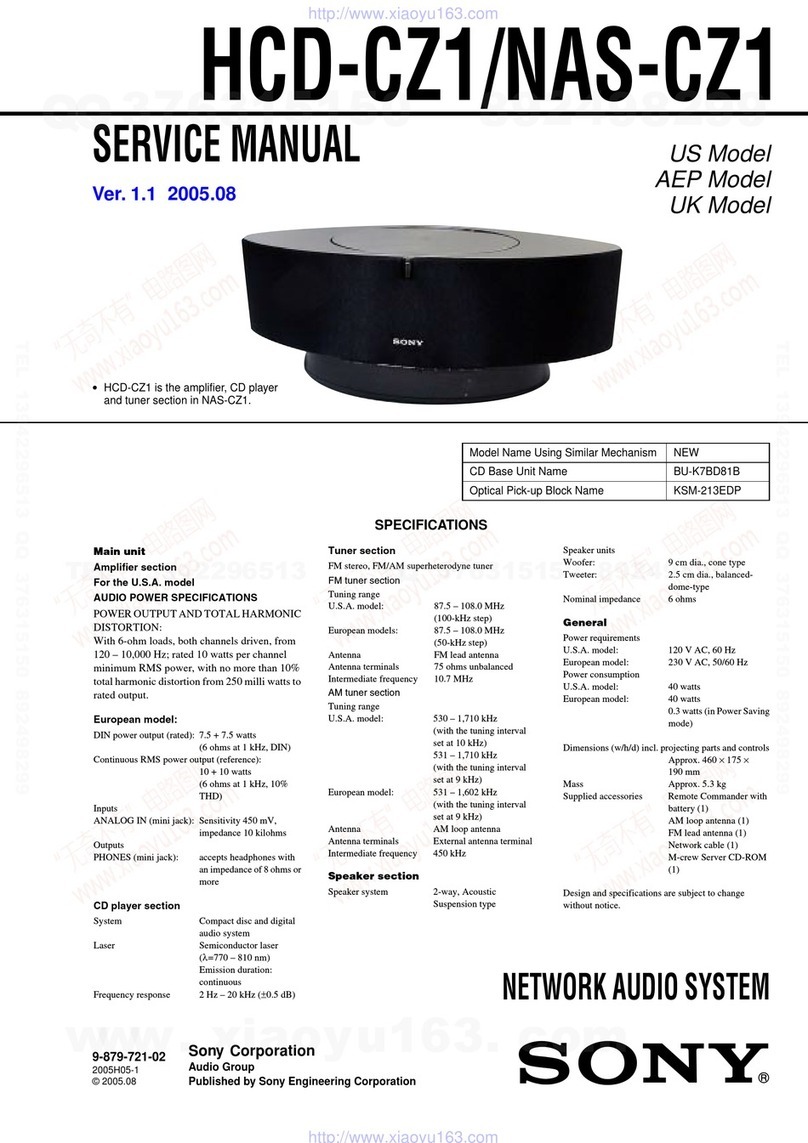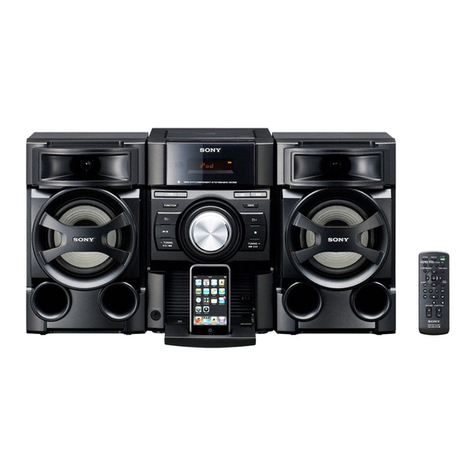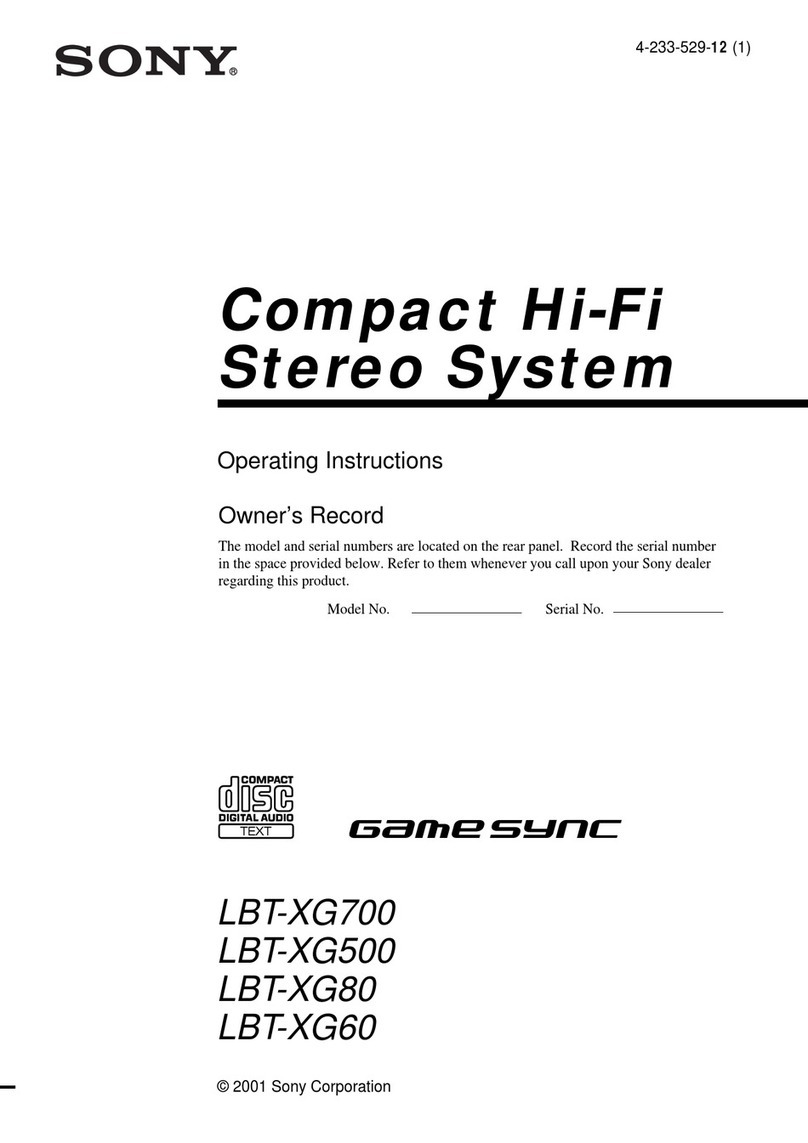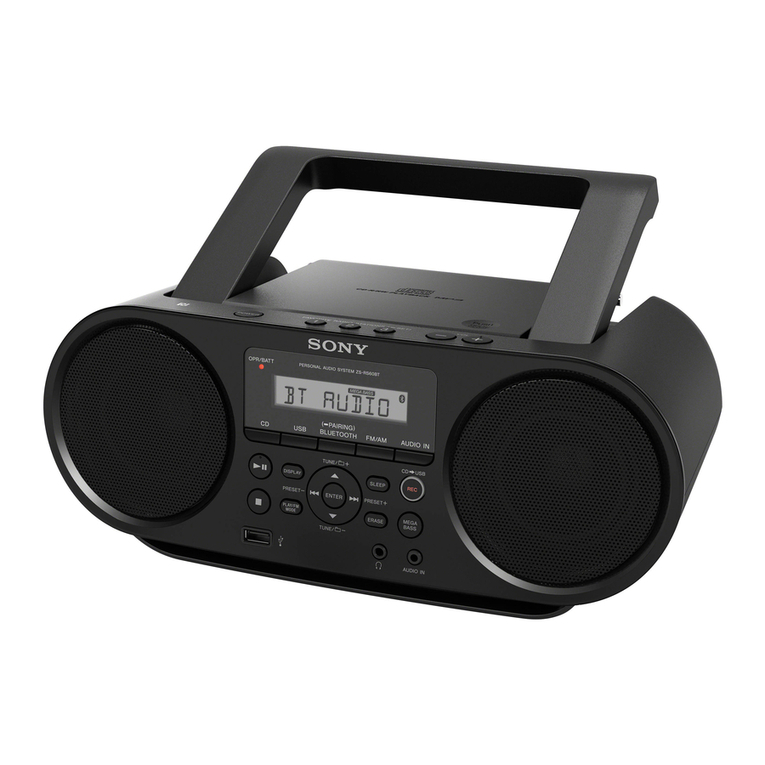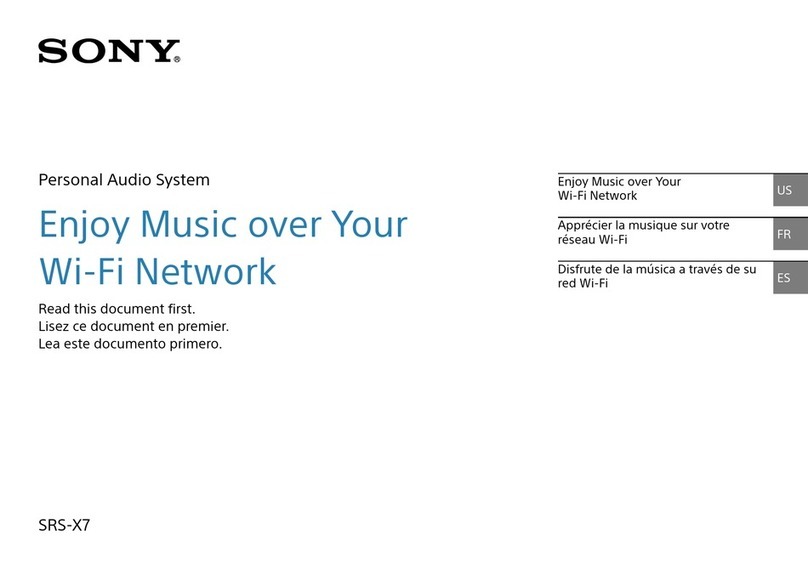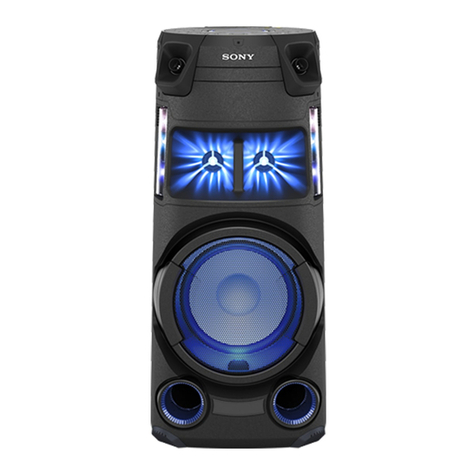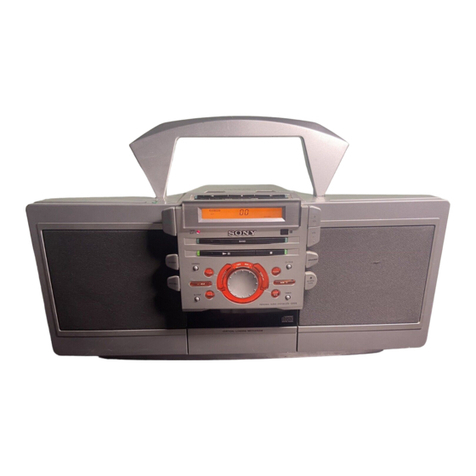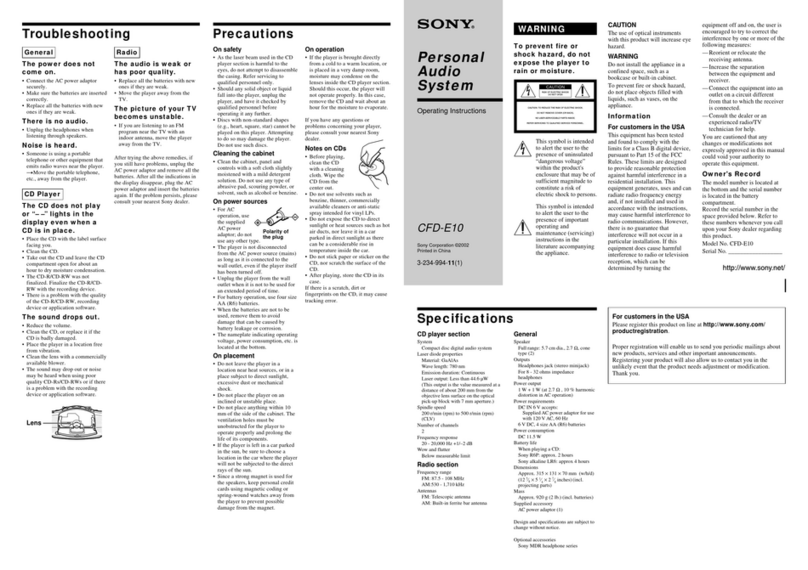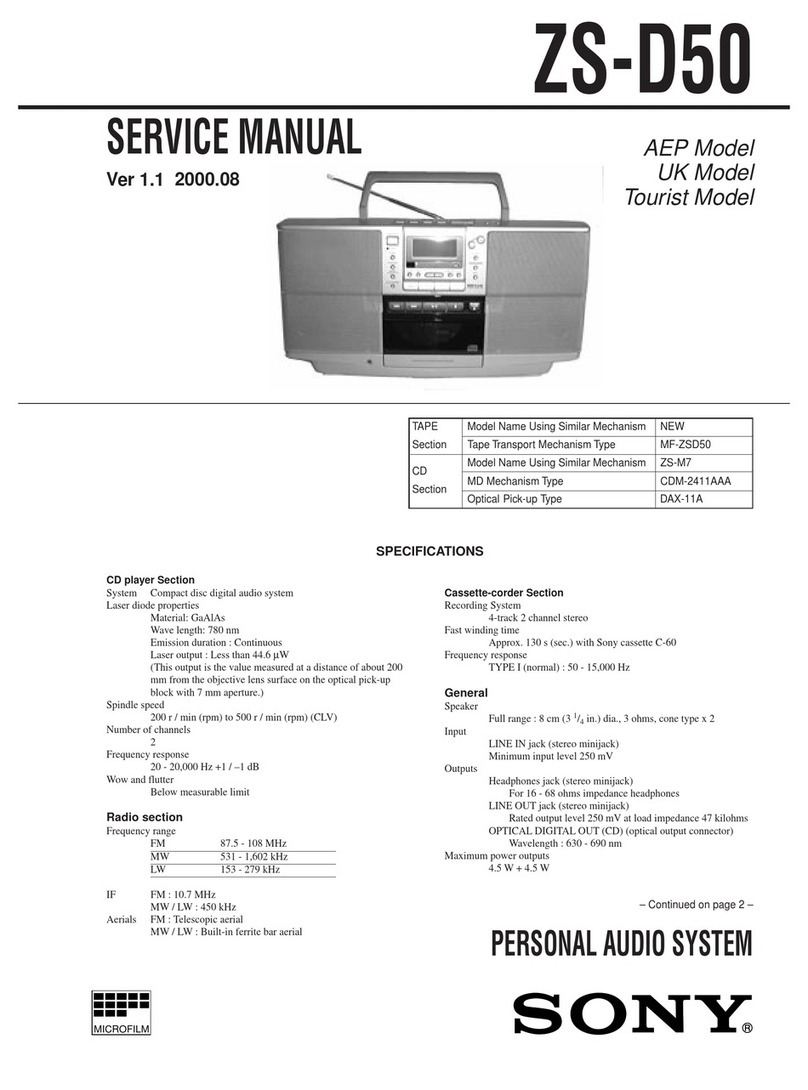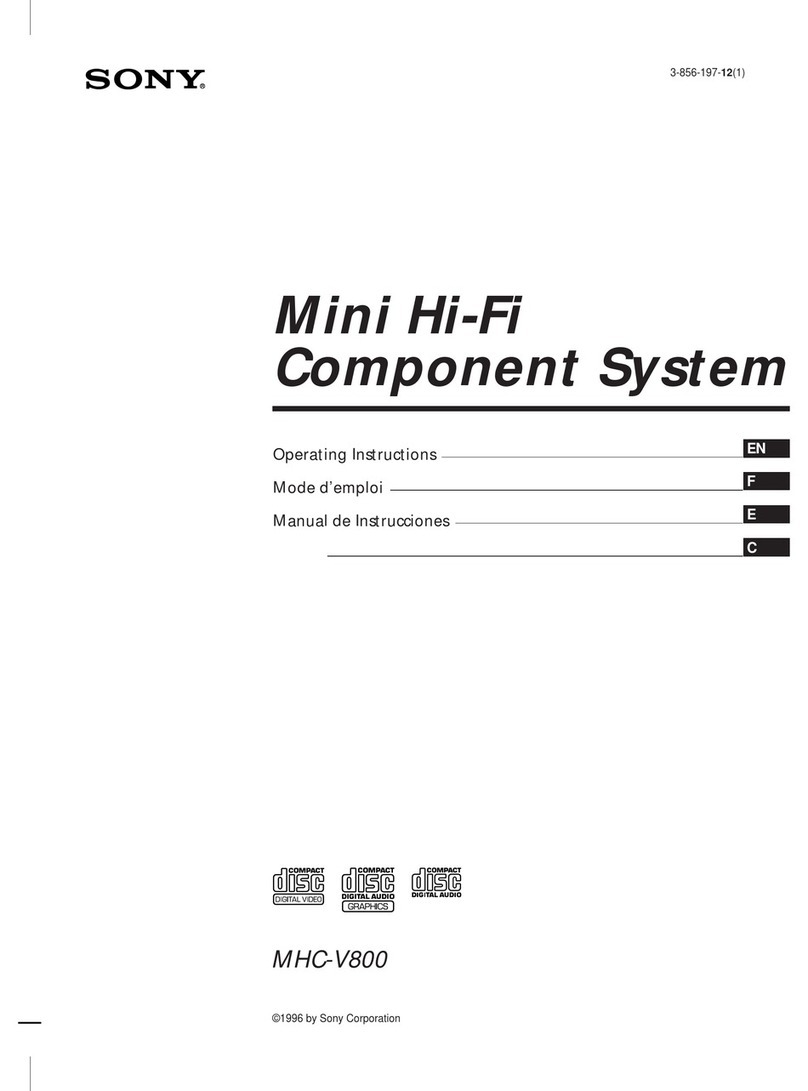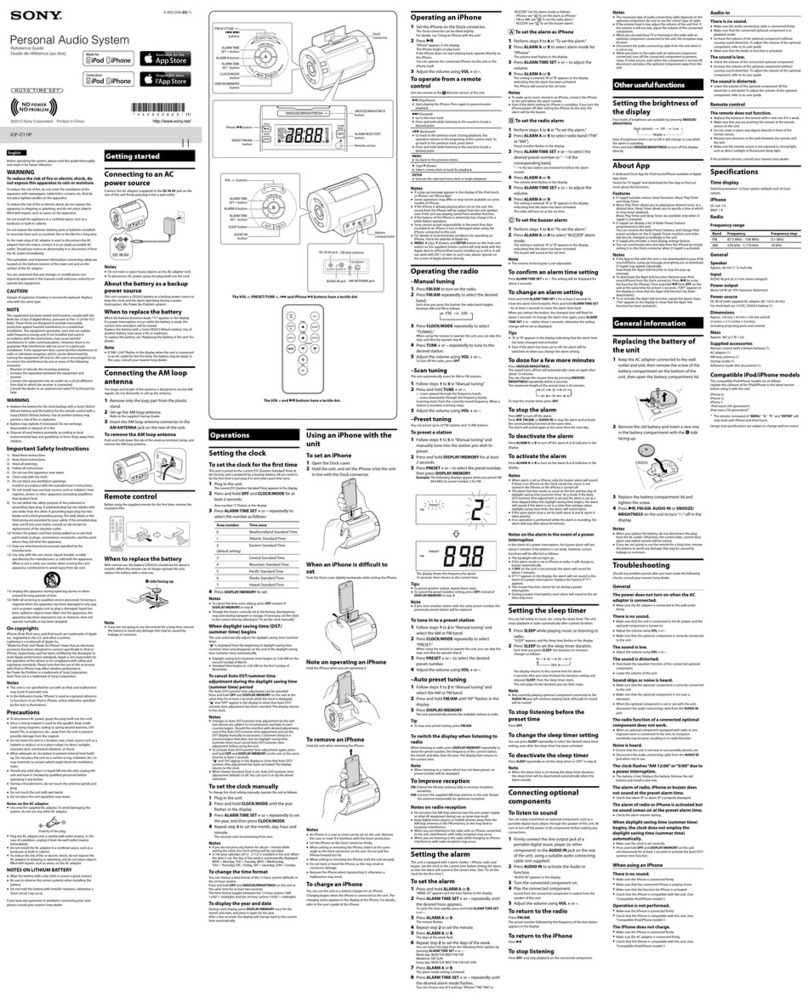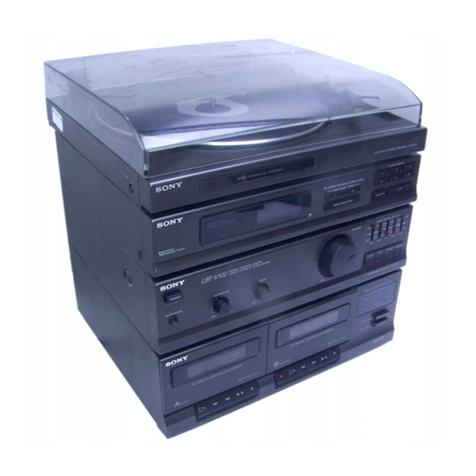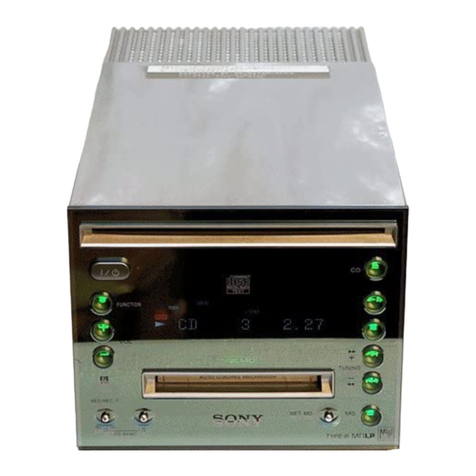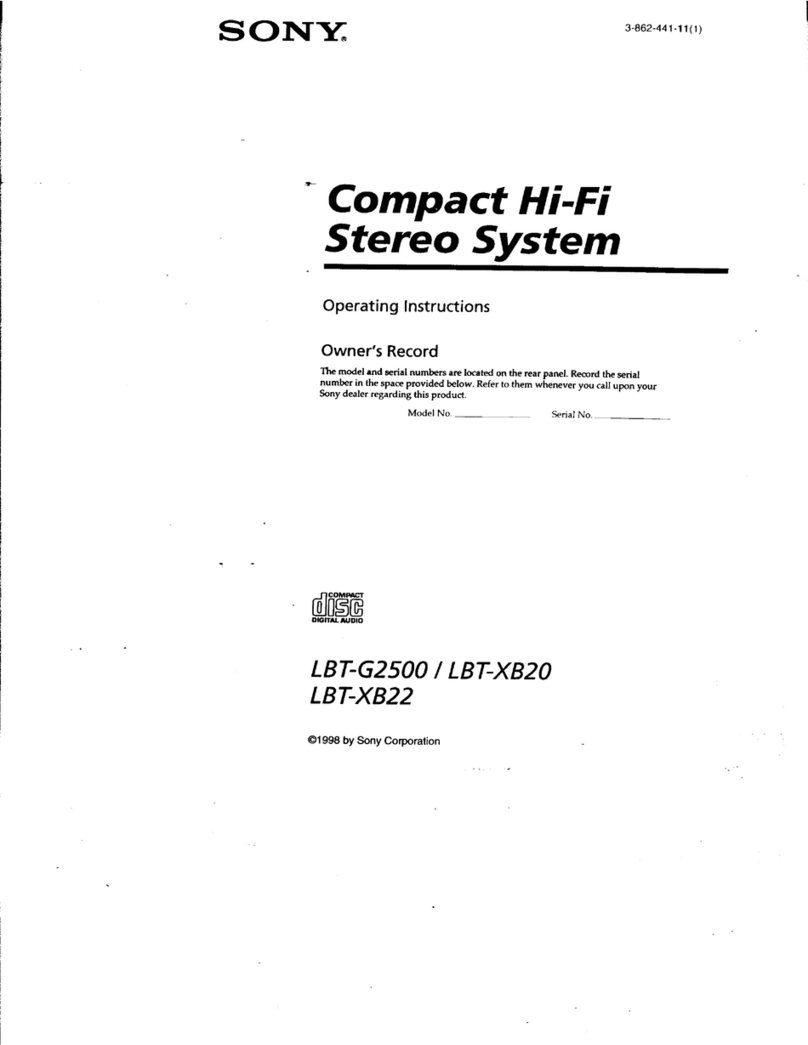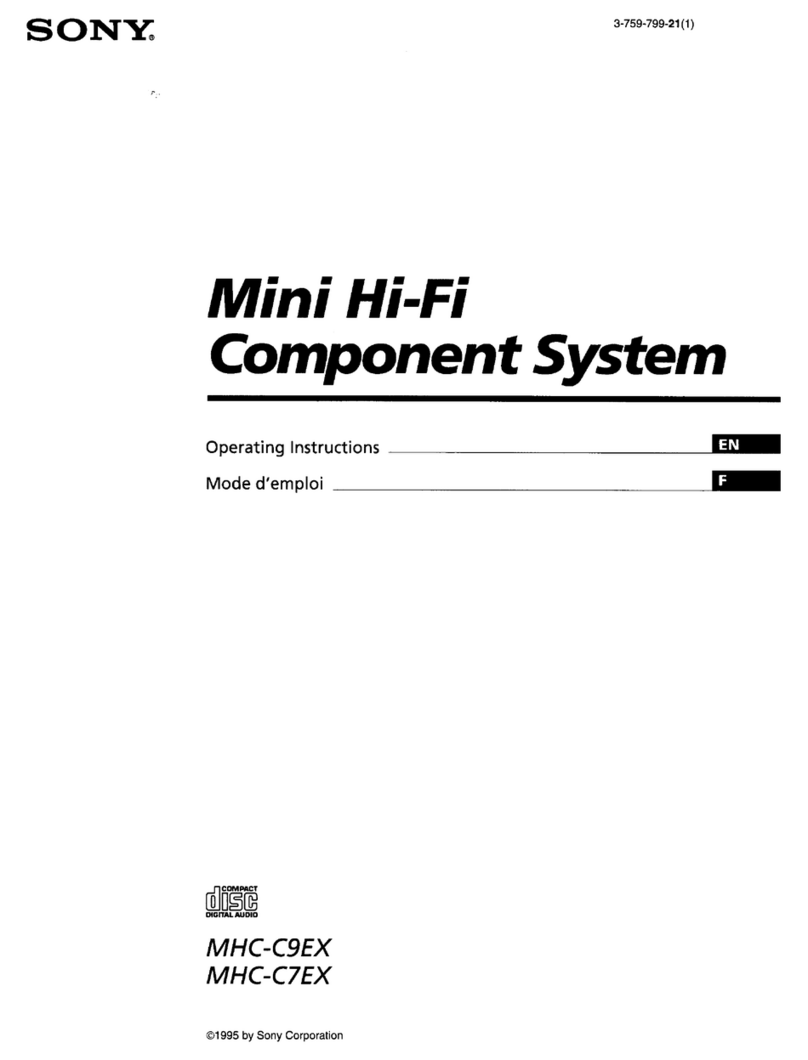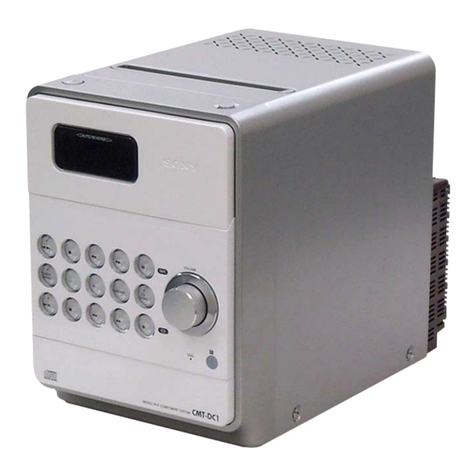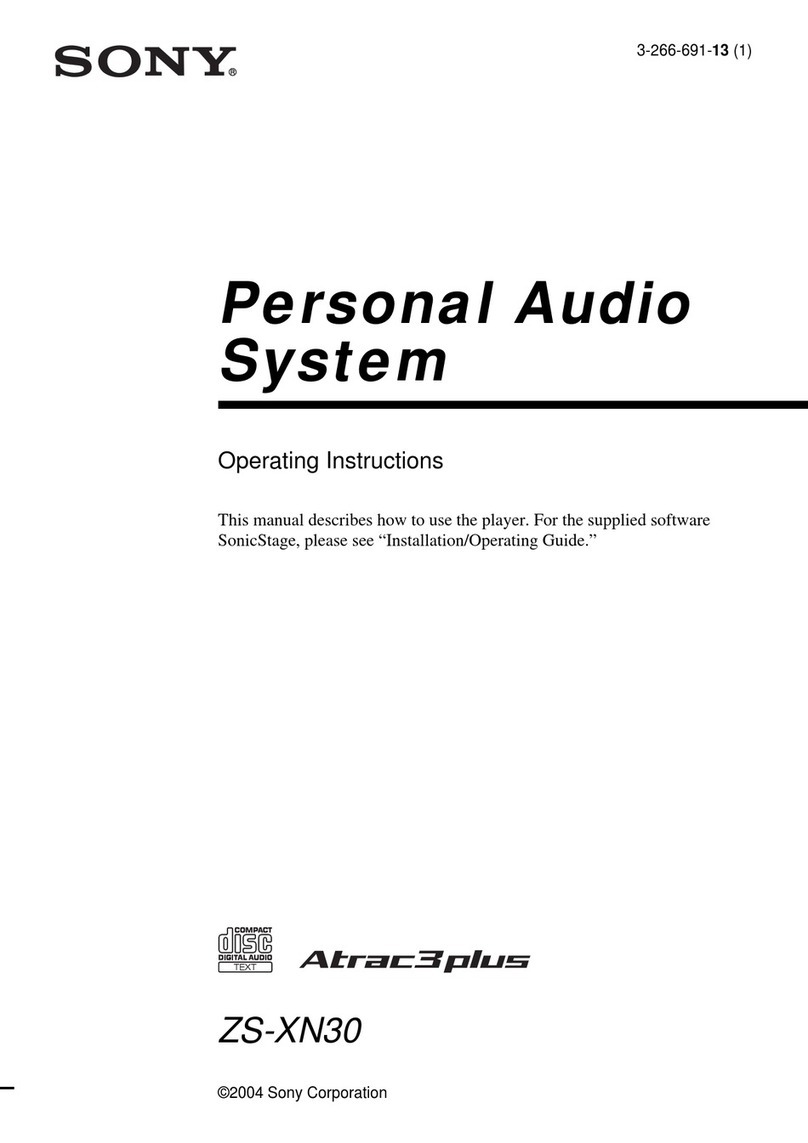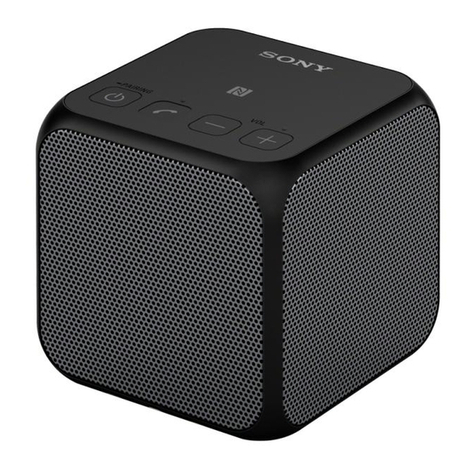5
TABLE OF CONTENTS
1. SERVICE NOTE
1-1. Service Position of CD BU Block....................................... 6
1-2. Service Position of TC Mechanism, Panel Board ............... 7
1-3. Service Position of Power Board ........................................ 8
1-4. Service Position of CD Changer ......................................... 8
2. GENERAL
List of Button Locations and Reference Pages........................ 9
3. DISASSEMBLY
3-1. Case ................................................................................... 13
3-2. Loading Panel.................................................................... 13
3-3. Front Panel Section ........................................................... 14
3-4. Tape Mechanism Deck ...................................................... 14
3-5. Game-in/hp Board, Mic Board.......................................... 15
3-6. Back Panel Section............................................................ 15
3-7. CD Mechanism Section..................................................... 16
3-8. Main Board ....................................................................... 17
3-9. Table Assy ......................................................................... 17
3-10. SE-130 Board ....................................................................18
3-11. TD Belt .............................................................................. 18
3-12. DC Motor (M901) .............................................................19
3-13. Optical Pick-up ................................................................. 19
3-14. BD81A Board ................................................................... 20
4. TEST MODE ..................................................................... 21
5. MECHANICAL ADJUSTMENTS ............................... 25
6. ELECTRICAL ADJUSTMENTS................................. 25
7. DIAGRAMS
7-1. Circuit Boards Location .................................................... 28
7-2. Block Diagram –CD Servo Section– ................................ 29
7-3. Block Diagram –Tuner/Tape Deck Section–..................... 30
7-4. Block Diagram –Main Section–........................................ 31
7-5. Block Diagram –Display/Power Section– ........................ 32
7-6. Printed Wiring Board –BD Section– ................................. 34
7-7. Schematic Diagram –BD Section–.................................... 35
7-8. Printed Wiring Boards –Loading Section– ....................... 36
7-9. Schematic Diagram –Loading Section–............................ 37
7-10. Schematic Diagram –Main Section (1/4)– ........................ 38
7-11. Schematic Diagram –Main Section (2/4)– ........................ 39
7-12. Schematic Diagram –Main Section (3/4)– ........................ 40
7-13. Schematic Diagram –Main Section (4/4)– ........................ 41
7-14. Printed Wiring Board –Main Section– ..............................42
7-15. Printed Wiring Boards –Power Section–........................... 43
7-16. Schematic Diagram –Power Section (1/2)– ...................... 44
7-17. Schematic Diagram –Power Section (2/2)– ...................... 45
7-18. Printed Wiring Board –Panel Section–.............................. 46
7-19. Schematic Diagram –Panel Section– ................................ 47
7-20. Printed Wiring Boards –Volume Section– ........................ 48
7-21. Printed Wiring Board –Mic Section– ................................ 49
7-22. Schematic Diagram –Volume, Mic Section– .................... 50
7-23. Schematic Diagram –Switch Section– ..............................51
7-24. Printed Wiring Boards –Switch Section (1/2)– ................. 52
7-25. Printed Wiring Boards –Switch Section (2/2)– ................. 53
7-26. Printed Wiring Boards –Jack Section–.............................. 54
7-27. Schematic Diagram –Jack Section– ..................................55
7-28. Printed Wiring Board –Lighting Section–......................... 56
7-29. Schematic Diagram –Lighting Section– ........................... 56
7-30. Printed Wiring Board –Surround Section– ....................... 57
7-31. Schematic Diagram –Surround Section– .......................... 58
7-32. Printed Wiring Boards –Transformer Section– ................. 59
7-33. Schematic Diagram –Transformer Section– ..................... 60
8. EXPLODED VIEWS
8-1. Back Panel Section............................................................ 71
8-2. Front Panel Section (1)...................................................... 72
8-3. Front Panel Section (2)...................................................... 73
8-4. Chassis Section ................................................................. 74
8-5. CD Mechanism Section (1) ............................................... 75
8-6. CD Mechanism Section (2) ............................................... 76
9. ELECTRICAL PARTS LIST ........................................ 77
HCD-ZX9
